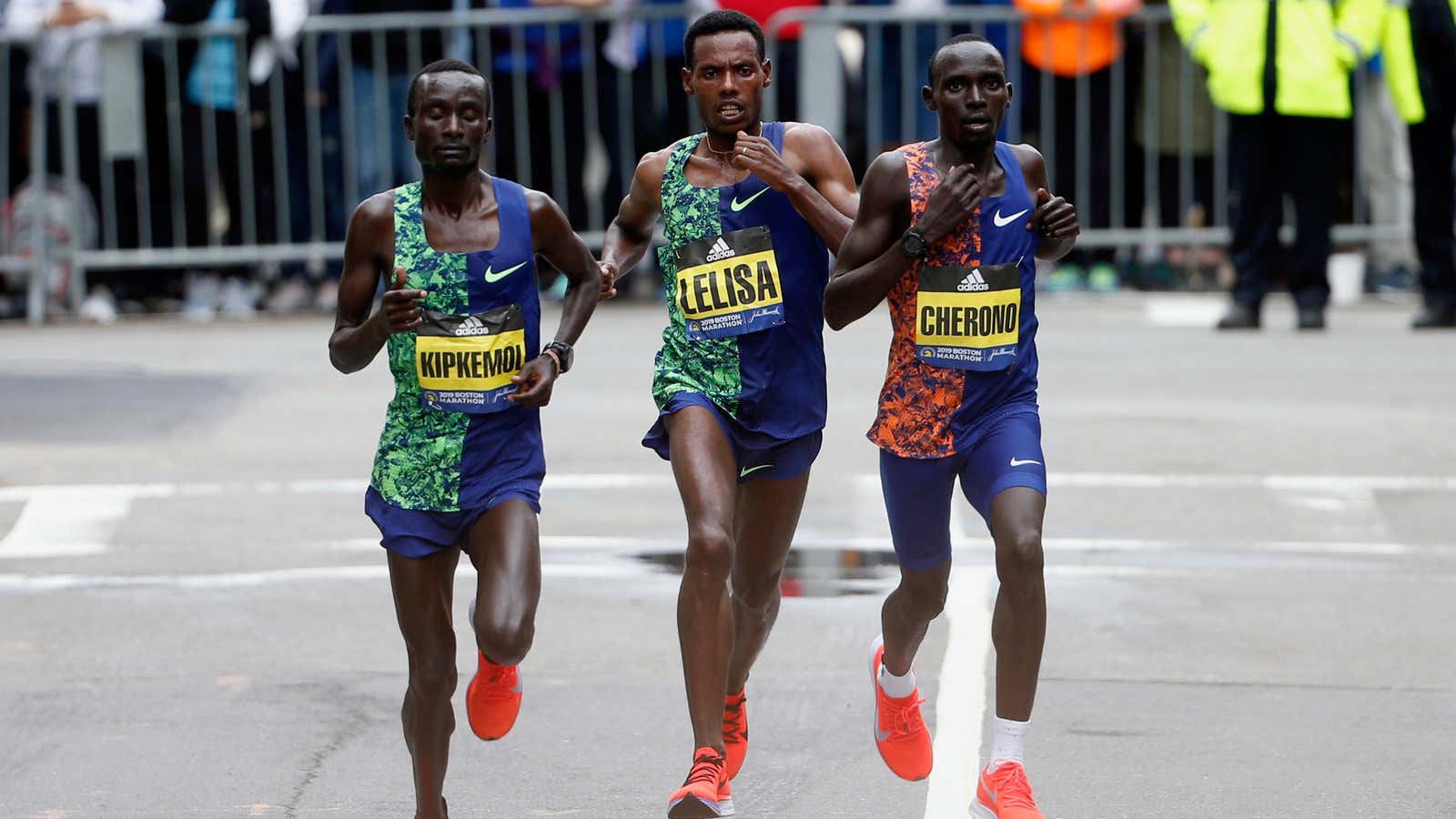Marathon day in Boston is a very big deal. The 26.2 mile race is the oldest such run in the nation, the first US marathon to allow women participants (in 1967), and a major city tradition that actually extends far beyond the borders of Boston.
Today, 30,000 runners are participating in the venerable tradition, the 123rd run from Hopkinton through eight municipalities to Boylston Street in downtown Boston.
Although the run is not designed with this purpose in mind necessarily, it’s also an event that teaches the youth of Massachusetts about grit and triumph, celebration and pain, and, of course, about heartbreak hill—the literal one and the figurative one that is life. It was a day of partying that offered me many lessons about life, running, and the marathon that is existence when I was growing up in Brookline along the race route.
Long before everyone went to the gym and did yoga and aspired to do ultra runs, Bostonians and their neighbors got excited to eat, drink, and be merry all along the route while some fantastic weirdos ran endlessly past us. I’d join the throngs standing on the sidewalks for miles, further than the eye could see, to cheer for the strangers who were displaying something great about humanity.
The onlookers love all runners. The speedy. The triumphant. The slow. The weary. The limping. The stumbling. Pretty much anyone who endures and anyone who cannot take another step despite the crowd’s encouragement.
As a kid, on marathon day, I’d get a couple of dollars from my parents, who only on this rare occasion allowed me to gorge on junk food and hang around outside with friends, on the street, all day. We weren’t the only ones to indulge while the runners pushed themselves to the physical edge. Marathon parties abound. Many beers are downed and many toasts declared while waiting for runners to reach any particular part of the route. So, basically it’s a 26.2-mile-long party in Boston and the environs, an excuse to gather outside with strangers—rain or shine—and have a good time.
The marathon seeped into me, like the best of lessons, without my even noticing. And it showed me, later, when my struggles were more profound than just trying to get extra junk food money, that good things are worth struggling for, that even when you forget why you started in the pain of the thick of things, persistence, for its own sake, has value.
Spectators aren’t passive participants in the race, however. When runners falter, the crowd encourages them. When one flies by, people cheer wildly. And though I didn’t notice it when I was a kid, I understood later that this annual experience showed me firsthand that just doing things, and trying very hard to finish, in whatever condition, was a win in itself.
Watching a marathon every single year made me believe that I could do it too. I had no idea when I was young that there were times and that it’s difficult to secure a spot in the race—the competition to get in has gotten stiffer every year. Back then, it seemed to me that all you had to do was decide to train and run and then get it done. And because I watched so many people hobbling slowly along, as well as the many who ran past pretty fast, I figured that one day I too would run a marathon.
And I did. But not in Boston, because I am not fast enough to qualify. Instead, I ran the Santa Rosa, California marathon about five years back. And running is maybe a generous description of what I did. Around mile 22 when I thought I could not take another step, I thought about Boston and all the people I’d seen over the years and all that cheering—the Santa Rosa marathon isn’t nearly as popular and onlookers are definitely not hanging around along the whole route all day waiting for slowpokes—and I could taste the triumph that would come if only I would get this thing done.
Around mile 24, my spirit soared. I’m not sure how it happened, but I sprinted to the finish line, excited for a beer and a smoke perhaps, certainly thrilled to have finally done, at age 41, a thing I had grown up admiring and dreaming of all my life.
Since then, I haven’t run another marathon and I’m not certain I ever will again. But I do have enduring respect for the professionals whose chosen sport is a test of endurance that taxes the body, mind, and spirit. Perhaps even more than for the winners, I feel deeply for the countless people who decide to test themselves this way though they will never win a medal, the nameless who will limp to the finish as dusk is settling, long after the pros have gone home to celebrate.
Marathons generally, and the race in Boston in particular, show the beautiful foolhardiness of ambition and effort. They are lessons in strength and pain and the muscles that we develop when we decide not to accept our limits. That’s why millions of people watch them every year, along race routes and through broadcasts, cheering for strangers. On race day, we are all in Boston, in spirit if not in person, cheering enthusiastically for the human race.
